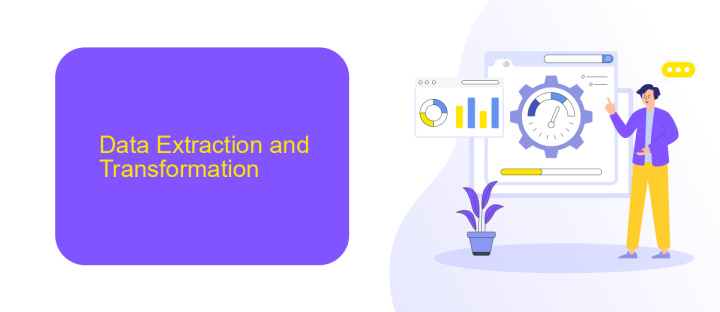How to ETL Data
Extract, Transform, Load (ETL) is a crucial process in data management and analytics. It involves extracting data from various sources, transforming it into a suitable format, and loading it into a destination system. Mastering ETL can significantly enhance your ability to manage data efficiently. This article will guide you through the essential steps and best practices for performing ETL operations effectively.
Introduction
Extract, Transform, Load (ETL) is a fundamental process in data management that involves extracting data from various sources, transforming it into a suitable format, and loading it into a data warehouse or other storage systems. This process is crucial for organizations to make informed decisions based on accurate and consolidated data.
- Extract: This step involves retrieving data from different sources such as databases, APIs, and flat files.
- Transform: The extracted data is then cleaned, filtered, and transformed into a format suitable for analysis.
- Load: Finally, the transformed data is loaded into a target system like a data warehouse, making it ready for querying and reporting.
For seamless integration and automation of the ETL process, services like ApiX-Drive can be invaluable. ApiX-Drive allows you to connect various applications and automate data transfers without the need for extensive coding. This not only saves time but also ensures data consistency and accuracy across different systems. By leveraging such tools, businesses can streamline their ETL workflows and focus more on data analysis and decision-making.
Data Extraction and Transformation

Data extraction involves retrieving raw data from various sources such as databases, APIs, or flat files. This step is crucial as it serves as the foundation for the subsequent transformation and loading processes. Tools like ApiX-Drive can simplify this task by offering seamless integration with multiple data sources, enabling automated data extraction without the need for extensive coding. Ensuring the accuracy and completeness of the extracted data is essential to avoid potential issues during later stages of the ETL process.
Once the data is extracted, it undergoes transformation to fit the target schema and meet business requirements. This may include data cleaning, normalization, and enrichment. Transformations can be performed using various ETL tools or custom scripts, depending on the complexity and specific needs of the project. ApiX-Drive, for instance, offers functionalities to map and transform data, making it easier to align disparate data formats. Proper transformation ensures that the data is consistent, reliable, and ready for loading into the destination system.
Loading Data into a Warehouse or Database

Loading data into a warehouse or database is a crucial step in the ETL process. This phase involves transferring the cleaned and transformed data into a storage solution where it can be accessed for analysis and reporting. Ensuring that the data is loaded efficiently and accurately is essential for maintaining data integrity and performance.
- Prepare the target database or warehouse by creating the necessary tables and schemas.
- Establish a connection between the source and the target systems. Tools like ApiX-Drive can simplify this step by providing seamless integration capabilities.
- Load the data in batches or through streaming, depending on the volume and frequency of data updates.
- Verify the loaded data to ensure it matches the source data in terms of accuracy and completeness.
- Monitor the loading process and handle any errors or discrepancies that arise.
Using integration services like ApiX-Drive can significantly streamline the data loading process by automating repetitive tasks and ensuring reliable data transfer. This allows organizations to focus more on data analysis and decision-making rather than managing data logistics.
Data Validation and Quality Control

Ensuring the accuracy and reliability of your data is paramount in any ETL process. Data validation and quality control are essential steps to guarantee that the extracted, transformed, and loaded data meets the required standards and is fit for analysis.
Data validation involves checking the data for errors, inconsistencies, and missing values during the extraction and transformation phases. Quality control, on the other hand, focuses on maintaining data integrity and consistency throughout the ETL pipeline.
- Implement validation rules to check data types, formats, and ranges.
- Use automated tools to detect and handle missing or duplicate data.
- Regularly audit data quality to identify and rectify issues promptly.
- Utilize integration services like ApiX-Drive to streamline data validation processes.
By incorporating robust data validation and quality control measures, you can ensure that your ETL process produces reliable and accurate datasets. This will ultimately enhance the quality of your analytics and decision-making processes.
- Automate the work of an online store or landing
- Empower through integration
- Don't spend money on programmers and integrators
- Save time by automating routine tasks
Conclusion
In conclusion, mastering the ETL (Extract, Transform, Load) process is essential for efficiently managing and utilizing data within any organization. By understanding the intricacies of data extraction, transformation, and loading, businesses can ensure data integrity, improve decision-making, and streamline operations. Properly executed ETL processes enable organizations to harness the full potential of their data, turning raw information into valuable insights.
To further optimize ETL workflows, leveraging integration services such as ApiX-Drive can be highly beneficial. ApiX-Drive simplifies the process of connecting various data sources and automating data transfers, thereby reducing manual effort and minimizing errors. By using such tools, businesses can enhance their ETL processes, ensuring seamless data integration and real-time data availability. Ultimately, a robust ETL strategy, supported by reliable integration services, is crucial for maintaining a competitive edge in today’s data-driven world.
FAQ
What is ETL and why is it important?
What are the main steps involved in the ETL process?
How can I automate the ETL process?
What are some common challenges in ETL?
How do I handle errors in the ETL process?
Apix-Drive is a universal tool that will quickly streamline any workflow, freeing you from routine and possible financial losses. Try ApiX-Drive in action and see how useful it is for you personally. In the meantime, when you are setting up connections between systems, think about where you are investing your free time, because now you will have much more of it.


